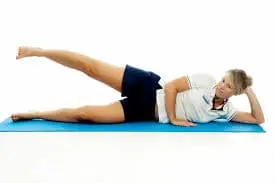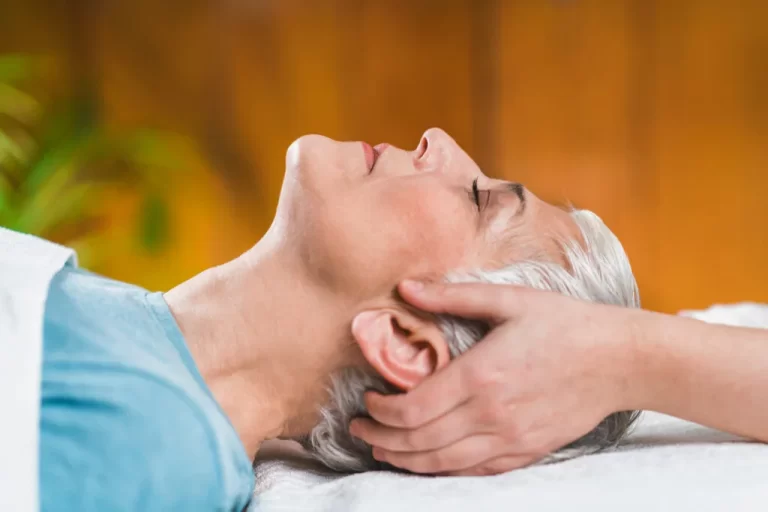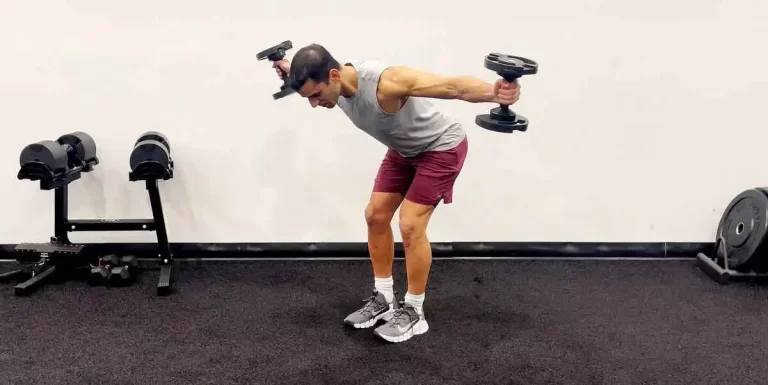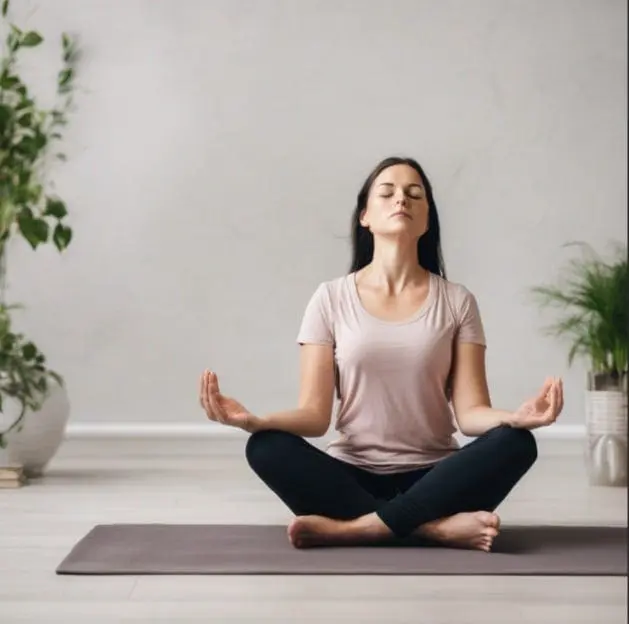13 Best Exercise for Neck pain
Introduction:
Many people suffer from neck pain, which often comes from bad posture, strained muscles, or underlying medical issues. Regular exercise for neck pain can be important in managing and preventing neck pain since it improves the general health of the neck and spine, strengthens muscles, and improves flexibility.
Focusing on movements that encourage correct alignment, reduce stress, and expand the range of motion is crucial when selecting the best exercises for neck pain. To increase functionality and reduce pain, these exercises focus on the neck and surrounding regions.
The primary objective of exercise is to keep the neck joint in its normal range of motion, and the second is to make the muscles stronger. Depending on the source, neck pain may be relieved by exercise. Before exercising, someone who has just suffered an injury should speak with a doctor.
Causes:
Neck pain typically results from injury to one or more of these structures. Most of the time, acute pain in the neck is not serious and will go away in a few weeks.
Typical reasons for neck pain include;
- Injury: Neck pain can be caused by injuries experienced in falls, contact sports, and auto accidents. Strain injuries may develop from the harm to your soft tissues. More severe fractures and dislocations may result from it.
- Strain: a common cause of neck pain and stiffness is muscle strain, which is a soft tissue injury that affects the muscles or ligaments. These ailments are frequently caused by awkward sleeping positions, constant poor posture, and overuse.
- Natural wear and tear as you age might result in osteoarthritis, which can create issues with your neck. For example, disc degeneration, or wear and tear, can cause discs to lose their flexibility. Alternatively, the area around the spinal column may begin to contract, leading to pinched nerves or spinal stenosis.
- Osteoporosis: Bone weakness in individuals with osteoporosis increases the risk of fractures. Furthermore, the disease may cause neck issues like pain, stiffness, numbness, and pinched nerves.
Signs and symptoms:
- Rigid neck: After experiencing neck pain, people frequently report feeling as though their necks are “rigid.”The neck’s range of motion can occasionally be reduced by neck pain.
- Difficulty when moving: Moving, twisting, or extending the cervical spine up and down or on both sides frequently worsens neck pain.
- Severe pain: Regional pain in the neck can feel “stabbing” or very painful.
- Pain or numbness that radiates: Shoulders, arms, and the head can all be affected by neck pain. You can have tingling in your hands or arms or numbness if your neck pain comes with a pinched nerve.
- Neck pain follows headache, which is defined as pain radiating toward the back of the head.
Advantageous of exercise:
- Strengthening the posture.
- Increased joint mobility and range of motion.
- They are improving the flexibility of muscles.
- Reduce neck pain and stiffness
- Makes weak neck muscles stronger.
- Both everyday functioning and overall well-being are improved by this.
Exercise for Neck pain:
Stretches for the neck can help people move more freely and relieve tense muscles. These are the best workouts for neck pain and mobility problems.
Upper Trapezius Stretch
- Begin by settling into a sitting position.
- Hold the chair’s bottom with your right hand. Lift your chin slightly.
- Turn your head to the left while maintaining a forward gaze.
- Put your left hand across your head’s right side.
- Pull your head to the left gently.
- Hold this position for a few seconds.
- To extend the stretch, apply light pressure.
- Avoid putting too much pressure on your head.
- Then return to the neutral position.
- Then relax.
- Repeat this exercise five to ten times.
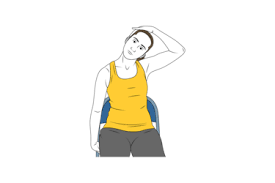
Levator Scapular Stretch
- Sit up straight and keep both hands at your sides.
- Using your right arm, extend your arm in front and place your hand across your head.
- Keep the remainder of the body straight and turn the head 45 degrees to the left.
- Adjust the chin downward until the back right side of the neck feels well stretched.
- The left hand can be raised to the back of the head and gently pulled down a bit more to extend the stretch even farther.
- Then return to the neutral position.
- Then relax.
- Repeat this exercise five to ten times.
- Repeat on the opposite side.
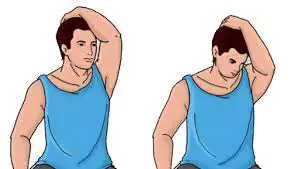
Isometric Neck Exercise
- Set up a comfortable seating position to start.
- Place your hand across your forehead.
- Use the muscles in your neck to resist the pull.
- Hold this pose for a few seconds.
- Then return to the neutral position.
- Then relax.
- Apply pressure to the left side of the head at this point.
- Hold this pose for a few seconds.
- Then return to the neutral position.
- Then relax.
- Change sides now.
- Next, put pressure on your head’s right side.
- Hold this pose for a few seconds.
- Then return to the neutral position.
- Then relax.
- Then apply pressure to the back of your skull.
- Hold this pose for a few seconds.
- Then return to the neutral position.
- Then relax.
- Repeat this exercise five to ten times.
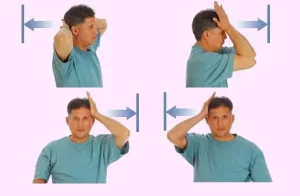
Neck flexion
- Get into the chair and sit down.
- Maintain a neutral head position and contract your abdominal muscles.
- Maintain a downward gaze while looking at your abdominal area.
- Hold this position for a few seconds.
- Then return to the neutral position.
- Then relax.
- Repeat this exercise five to ten times.

Neck Extension
- Sit with your back straight.
- Breathe, slowly extend your neck, and look at the sky.
- Hold this position for a few seconds.
- Then return to the neutral position.
- Then relax.
- Repeat this exercise five to ten times.
Neck roll
- For the first step, stand up on the floor.
- Start by tilting your head to the right.
- Your trap muscle should feel stretched from your neck.
- Turn your head slowly in the opposite direction after a few seconds.
- Once you reach your left shoulder, remain there for a few seconds.
- To complete the turn stop where you started.
- Roll around in a clockwise direction again.
- Then return to the neutral position.
- Then relax.
- Repeat this exercise five to ten times.
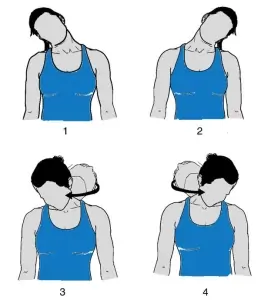
Shoulder rolls
- Position your feet hip-width wide while standing on the ground.
- You should keep your arms by your sides.
- Inhale, then raise your shoulders to your ears.
- Squeeze the shoulder blades together while moving the shoulders back.
- Let out a breath and lower your shoulders.
- Then return to the neutral position.
- Then relax.
- Repeat this exercise five to ten times.
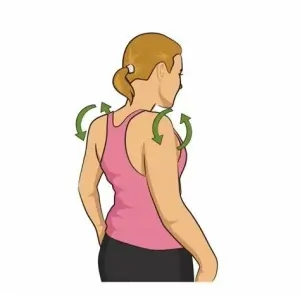
Side-to-side bends
- Start on the floor in a comfortable standing position.
- Gently bend your head to the right so you can move your right ear to your right shoulder.
- Feel how the left side of your neck stretches as you hold it for a few seconds.
- Next, return your neck to its neutral position.
- Stretch your left side again, bringing your left ear close to your left shoulder and holding it there for a few seconds.
- Then return to the neutral position.
- Then relax.
- Repeat this exercise five to ten times.

Chin tuck
- Sit or stand upright and look front.
- As you raise your head back, maintain your level of focus.
- Tuck your chin into your throat without turning your head up or down.
- Hold this position for a few seconds.
- Then return to the neutral position.
- Then relax.
- Repeat this exercise five to ten times.
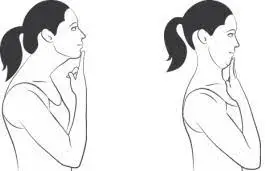
Prone cobra exercise
- When you lie on the ground in a prone posture, ensure that your arms are by your sides.
- Make sure your body is in a straight line, with your eyes down, your abdominal muscles squeezed in, and your toes pointed directly ahead to the floor.
- Pulling the head off the floor and extending the upper back will bring the body into a straight line.
- Your shoulder blade should be squeezed.
- Hold this position for a few seconds.
- Then return to the neutral position.
- Then relax.
- Repeat this exercise five to ten times.

Doorway stretch
- Place yourself in an open doorway.
- With the palms facing ahead, raise each arm to the side in a 90-degree bend.
- Your palms should rest on the door frame.
- If this is too painful, try bending your elbows slightly.
- Step forward slowly with one foot.
- Your chest and shoulders should feel stretched.
- Avoid bending forward and stand straight.
- Hold this position for a few seconds.
- Then return to the neutral position.
- Then relax.
- Repeat this exercise five to ten times.

Shoulder Blade Squeeze
- To begin, stand up and place your feet flat on the floor.
- You can avoid rounding your back by shifting your weight forward a little.
- To maintain alignment of your ears, shoulders, and hips, raise your arms shoulder-height with your palms facing forward and your elbows bent.
- Stretch your arms back while bringing your shoulder blades together.
- Hold this position for a few seconds.
- Then return to the neutral position.
- Then relax.
- Repeat this exercise five to ten times.
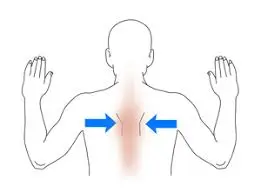
Seated Spine Twist
- Position yourself with your back to the left on the sideways chair.
- To perform the spinal twist, turn your body to the left while gripping the chair’s back.
- For a few seconds, stretch your spine with each inhalation and rotate with each exhalation.
- Then return to the neutral position.
- Then relax.
- Repeat this exercise five to ten times.
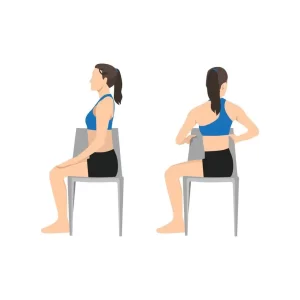
What safety measures need to be followed while working out?
- While exercising, keep your posture upright.
- Warming up and stretching are normally done before beginning any exercise.
- Eat a light meal before exercising. Avoid eating immediately after working out, but when you’re not hungry, do it.
- Stretching should be done as directed by the protocol both before and after sets, in addition to performing the number of repetitions needed for each exercise.
- Avoid challenging and strenuous exercises.
- Wear loose, comfortable attire that encourages relaxation and range of motion to get maximum benefit out of your exercise.
- Try to refrain from making sudden or forceful movements when working out.
- Have a rest in between exercises.
- Gradually and carefully bend and stretch.
- The stiff muscles in your joint may be difficult to stretch, but it is necessary and normal. Exercise and stretching shouldn’t cause pain or make you feel like someone is stabbing you because they aggravate your illness and are unhealthy.
- If there is a movement that you find challenging, record your progress in a weekly log of how the activity improves.
- If your pain is severe, stop immediately.
When will you stop exercising?
- Fever
- Intense muscle burning.
- If exercise causes pain, it should be discontinued.
- You don’t feel well.
- Headache
Additional strategies to alleviate neck pain:
- Poor posture is frequently the cause of neck problems. It may worsen an injury and raise the risk of getting hurt again.
- The head could extend from the spine as a result of the forward head position caused by prolonged use of a computer or phone. This may result in symptoms like dull aches on the sides of the neck or across the back, which may radiate to the head, shoulders, and upper back.
- A person may experience less shoulder, back, and neck pain if they change their posture.
- One should try to avoid bending over when seated and maintain the head in alignment with the spine. When using a computer, it could be beneficial to align the screen with your eyes.
- To maintain proper posture when standing, one should maintain alignment of the shoulders, neck, and spine. They must avoid bending their necks forward.
- Neck issues might also result from sleeping on one’s stomach. With a pillow between the knees, one can attempt to sleep on one side or the back. To maintain the neck in line with the spine, they can also utilize a supporting cushion.
Summary:
One of the most prevalent conditions that affect people from every aspect of life is neck pain. It is recommended to regularly receive physical therapy to maintain ideal muscle strength and flexibility. Physical therapy has the potential to improve neck pain and increase range of motion. Before beginning your physical therapy treatment, keep in mind that you should perform these exercises cautiously and slowly.
Neck stretches can help with the prevalent issue of neck pain. Neck stretches are typically simple to perform, and they can help reduce daily stiffness and pain while also avoiding more serious issues. They can reduce stress and increase your neck’s range of motion and flexibility.
You should pay attention to how much pain you experience while exercising, especially in the beginning. However, regular exercise may help in improving neck movement and should get easier with time.
FAQ:
What is the most effective exercise for neck pain?
Neck roll
Neck flexion and extension
Isometric Neck Exercise
Upper Trapezius Stretch
Can you work out if you have neck pain?
Overall, exercise shouldn’t worsen your current neck pain. On the other hand, as the body adjusts to new movements, exercising might occasionally result in temporary muscular soreness. Following exercise, this kind of soreness ought to go away quickly and not worsen the following morning.
How is neck pain treated?
Pain medications, stretching, and mild heat are typically the most effective methods for rapidly reducing neck stiffness. Improve your lifestyle by Achieving and maintaining a healthy weight to avoid neck stiffness and relieve neck pain over a while.
What is causing your neck pain?
Overuse frequently results in muscle strains, such as spending too much time bent over a computer or smartphone. One little action that could result in neck pain is reading in bed. stress on the joints. Like other joints in the body, neck joints degenerate with age.
What is the duration of neck pain?
A common issue that typically resolves in a few days or weeks is neck pain or stiffness. Rarely does it indicate a significant problem.
Which sleeping posture is ideal for people who have neck pain?
Your neck will feel most relaxed resting on your side or your back. While a flatter pillow protects your head, a rounder pillow supports the natural curvature of your neck if you sleep on your back.
If my neck pain gets worse after doing these exercises, what should I do?
Do not continue with these exercises if you develop new kinds of pain or if they aggravate existing neck pain. If the pain continues after you stop exercising, it is advised that you see a physical therapist for help.
Can persons of any age perform these exercises?
As long as you are mindful of your form and technique, anyone of any age may perform neck exercises. It is advised that elders spend more time practicing form before beginning the routines.
References:
- D. Parmar (2023, Dec. 13). The Top 9 Neck Arthritis Exercises to Reduce Stiffness and Pain. A mobile clinic for physical therapy. The top nine exercises to relieve stiffness and pain from neck arthritis can be found at https://mobilephysiotherapyclinic.in/.
- On June 29, 2023, Prajapati, D. The finest exercises for neck pain are provided by Physiotherapy Clinic Samarpan. Physiotherapy Clinic of Samarpan. The best neck pain exercises are available at https://samarpanphysioclinic.com/.
- On February 27, 2023, Brahmbhatt, B. The Greatest Physiotherapy Neck Pain Relief Exercises. https://www.physiotattva.com/blog/top-physiotherapy-tasks-for-relieving-neck pain
- Fort Worth Bone & Joint Clinic. “9 Neck Pain Relief Stretches” (n.d.). https://thcboneandjoint.com/educational-resources/neck-exercises.html
- A. Kandola (2020, Dec. 22). Eleven neck pain exercises. Exercises for Neck Pain: https://www.medicalnewstoday.com/articles
- Image 8, Sign up or log in to view. (n.d). The image is located at https://www.facebook.com/photo.php?fbid=1018169908258364&id=136182576457106&set=a.136184566456907&locale=lv_LV


